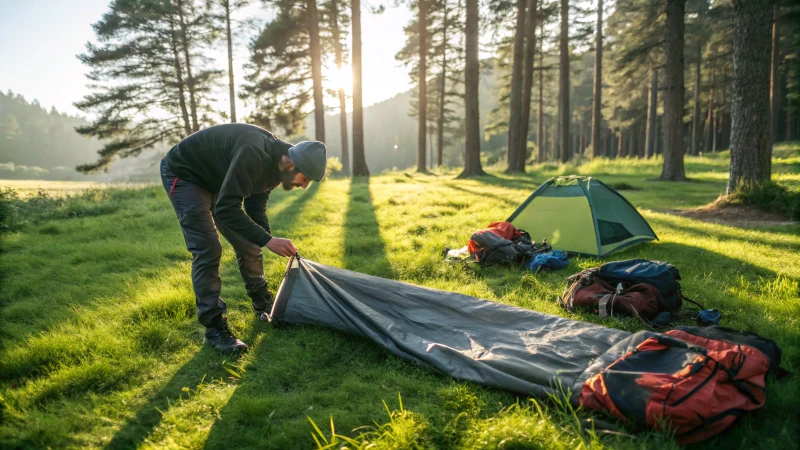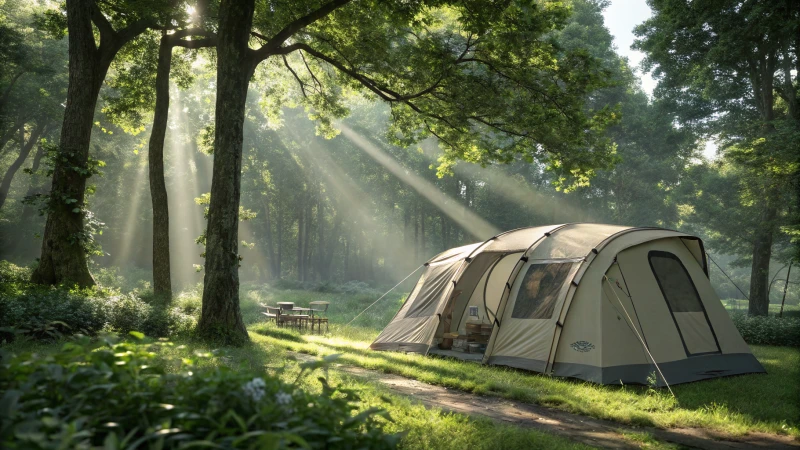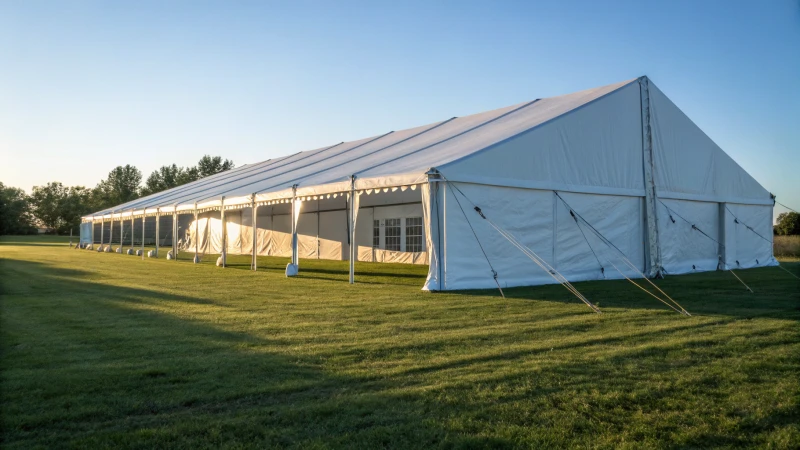
Ever tried setting up a large event tent and felt overwhelmed by the sheer number of tools involved? Let’s simplify it together.
To set up a large event tent, you’ll need a toolkit including hand tools like wrenches and rubber mallets, anchoring tools such as sledgehammers, lifting equipment like hoists, and essential safety gear like gloves and hard hats.
I remember the first time I was in charge of setting up a massive tent. The sheer size of it was daunting, but having the right tools made all the difference. With wrenches and rubber mallets for the basics, sledgehammers to secure those stubborn stakes, and hoists to lift heavy sections, the process became manageable. Safety gear wasn’t just an add-on—it was crucial. Gloves protected my hands from cuts while hard hats gave peace of mind. These tools were more than just objects; they were part of the team that turned an empty field into a stunning venue. Let’s dive into how each tool plays its part in making your event a success.
A rubber mallet is essential for setting up a large event tent.True
Rubber mallets are used to secure tent stakes without damaging them.
Safety gear is optional when setting up a large event tent.False
Safety gear like gloves and hard hats are crucial to prevent injuries.
What Basic Hand Tools Are Necessary for Tent Assembly?
Getting ready to set up a tent? Let’s make sure you have the right tools to make the process smooth and safe.
Essential hand tools for tent assembly are wrenches, screwdrivers, rubber mallets, and pliers. These tools simplify setup and ensure a stable, secure tent.
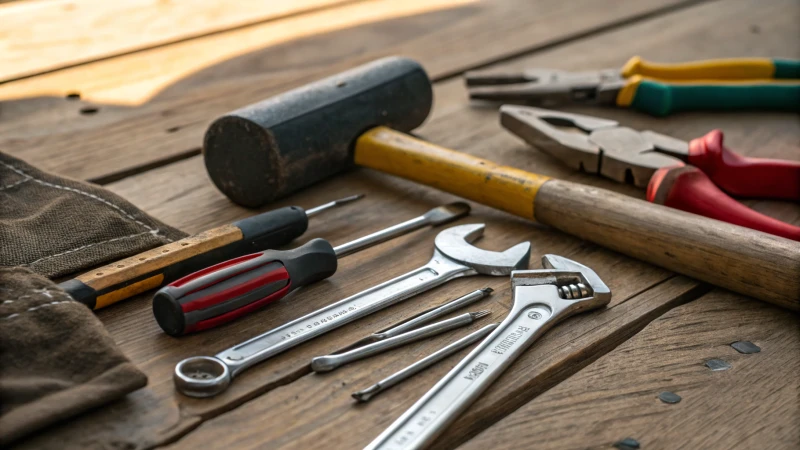
Essential Hand Tools for Tent Assembly
When I first started setting up tents, I remember feeling a bit overwhelmed by all the different tools out there. But over time, I learned which ones truly made a difference. Here’s a rundown of the essential hand tools that I never leave home without:
| Tool | Purpose |
|---|---|
| Wrenches | To tighten bolts and secure frame connections. |
| Screwdrivers | For assembling smaller components and attachments. |
| Rubber Mallets | To safely drive stakes or pins into the ground. |
| Pliers | Useful for gripping and adjusting wires or cables. |
Importance of Each Tool
-
Wrenches: These are indispensable when it comes to securing frame connections1. They ensure that all bolts are tightened, maintaining the structural integrity of your tent.
-
Screwdrivers: Often overlooked, screwdrivers are essential for attaching small components that form part of the tent’s framework or accessories.
-
Rubber Mallets: Instead of using metal hammers which can damage stakes, rubber mallets allow you to drive them into the ground without causing harm2 to the materials.
-
Pliers: Pliers come in handy when dealing with wires or cables that need adjusting or securing during setup.
Additional Considerations
Over time, I’ve found that depending on the type of tent and terrain, additional tools can be really helpful. For instance, if you’re dealing with hard ground, having ground screws or drill anchors3 on hand can make your setup much more stable.
Safety gear is another aspect I learned not to overlook. Gloves and hard hats are invaluable for preventing injuries during assembly. By having these basic hand tools ready, not only will your tent assembly be more efficient, but you’ll also ensure a safer process from start to finish.
Rubber mallets are used to drive stakes into the ground.True
Rubber mallets safely drive stakes without damaging materials.
Pliers are not necessary for tent assembly.False
Pliers are essential for adjusting and securing wires or cables.
How Can Anchoring Tools Keep Your Tent Secure?
Ever had your tent threatened by a gusty wind while camping? Let me guide you through anchoring tools to ensure a snug and secure setup.
Anchoring tools like stakes, sandbags, and weighted anchors secure tents by creating a stable base that resists wind and rain. They work by penetrating the ground or adding weight to prevent movement, making them essential for different terrains.

Understanding the Role of Anchoring Tools
I remember the first time I set up a tent by myself. It was a windy afternoon at the beach, and I watched helplessly as my tent tried to fly away. That’s when I realized how crucial anchoring tools are. They dig into the ground or add weight, ensuring your tent doesn’t take off with the breeze.
Types of Anchoring Tools
- Stakes: These are your best friends on grassy terrains. I usually drive them into the ground with a trusty mallet4, ensuring the guy lines hold firm.
- Sandbags: Perfect for sandy beaches. I fill them with sand to keep my tent rooted despite the wind’s efforts.
- Weighted Anchors: These come in handy on asphalt or rocky grounds where stakes just won’t cut it. They rely on gravity rather than ground penetration.
How They Work
Think of anchoring tools as your tent’s bodyguards. When the wind tries to bully your setup, stakes dig in deep, creating friction that holds your tent down. Sandbags rely on their heft, and weighted anchors use gravity as their shield.
Choosing the Right Anchoring Tool
- For Soft Ground: Stakes or pegs are your go-to. I always angle them away from the tent for that extra grip.
- For Hard Surfaces: Weighted anchors or ground screws5 are my saviors here.
- For Sandy Areas: Sandbags never fail to keep my beach tent secure.
Additional Techniques
- Guy Lines: Tightening these is crucial for stability. They distribute force across multiple points, adding strength.
- Tent Pegs: V-shaped or Y-shaped pegs are my choice for loose soils; they offer that added grip.
| Terrain | Recommended Tool |
|---|---|
| Soft Grass | Stakes |
| Beach Sand | Sandbags |
| Rocky Terrain | Weighted Anchors |
| Asphalt | Drill-in Anchors |
Selecting the right anchoring tools tailored to your environment is key. Trust me, it transforms your camping experience from nerve-wracking to absolutely enjoyable. Learn more6 about choosing the perfect equipment for your adventure.
Stakes are ideal for hard surfaces like asphalt.False
Stakes are best for soft grounds; weighted anchors suit hard surfaces.
Sandbags are effective in sandy terrains.True
Sandbags provide weight to counteract wind forces on sandy grounds.
What Lifting Equipment Is Essential for Large Tent Setup?
Remember the first time you set up a massive tent? It felt like a daunting task, but with the right gear, it becomes a breeze. Let’s explore the essential equipment that makes assembling these giants safe and efficient.
Essential lifting equipment for setting up large tents includes hoists or pulley systems, winches, forklifts or cranes, and step ladders or scaffolding. These tools help manage heavy components and ensure safe assembly.
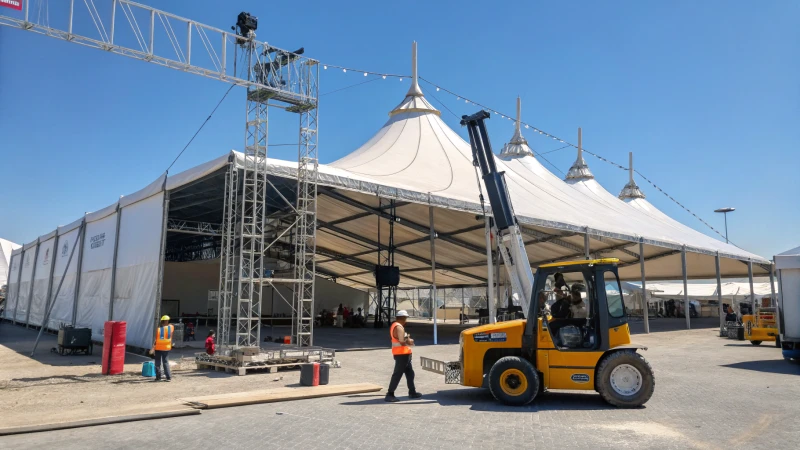
I vividly recall my first encounter with a large tent setup—it was both thrilling and intimidating. But once I got to know the essential tools, it felt like I had unlocked a secret passage to efficiency and safety.
Hoists and Pulley Systems
I remember the time we had to hoist a massive tent frame. Using a hoist and pulley system not only saved our backs but also made the whole process smoother. These systems are perfect for lifting those hefty sections, like frames or large pieces of fabric. They really help in distributing the weight evenly, making sure no one gets strained. This equipment is especially vital for industrial tent setups7 where structural integrity is crucial.
Winches
Winches became my best friend when it came to tensioning the tent fabric. You know that satisfying moment when everything just fits perfectly? That’s what a winch does. It ensures the fabric stays taut and aligned, which is crucial for maintaining stability, especially if you’re dealing with unpredictable weather. For event tents8, this means a polished look and increased stability against wind.
Forklifts and Cranes
For larger components, forklifts or cranes come in handy. I recall a setup in an expansive outdoor venue where we needed precision in placing heavy sections. Renting the right equipment through a forklift rental guide9 made all the difference.
Step Ladders and Scaffolding
Reaching those high sections safely is non-negotiable, and that’s where sturdy step ladders or scaffolding come into play. I learned the hard way that choosing the right ladder type10 significantly improves safety, especially when securing connections at elevated areas.
Table: Lifting Equipment Summary
| Equipment | Primary Use |
|---|---|
| Hoists/Pulleys | Lifting heavy sections, reducing strain |
| Winches | Tensioning fabric, maintaining alignment |
| Forklifts/Cranes | Positioning large components |
| Ladders/Scaffold | Safe access to elevated areas |
Planning with these tools in mind not only boosts efficiency but also elevates safety standards during setups. Each piece plays a unique role in making sure everything goes off without a hitch, turning what could be a stressful experience into a seamless event setup.
Hoists are vital for industrial tent setups.True
Hoists distribute weight, ensuring controlled lifts and structural integrity.
Winches are unnecessary for event tents.False
Winches provide tension, ensuring fabric alignment and stability against wind.
Why Is Safety Gear Crucial When Setting Up Event Tents?
Have you ever been caught in a sudden storm while setting up an event tent?
Safety gear is vital when setting up event tents to prevent accidents involving falling objects, sharp edges, or slips. Essential items include gloves, hard hats, high-visibility vests, and harnesses for elevated tasks, all crucial for ensuring the team’s safety.

I remember one particular summer festival when the weather took an unexpected turn. We were racing against dark clouds that seemed to appear out of nowhere. I realized then, more than ever, how crucial safety gear was. Here’s why:
The Importance of Protecting Your Hands
Handling stakes, tent fabrics, and metal poles is no easy feat. Once, while trying to secure a tent pole, I managed to give myself a nasty cut—ouch! That’s when I learned the hard way that gloves are not just accessories; they’re a necessity. They act as a shield between your skin and those sharp or abrasive materials.
| Safety Gear | Purpose |
|---|---|
| Gloves | Protects hands from cuts and bruises |
Head Protection Against Falling Objects
During another setup, I was almost hit by a loose frame piece that slipped from a colleague’s grasp. Thankfully, my trusty hard hat was on. Hard hats are lifesavers in these situations, providing a protective layer against those unforeseen incidents that seem to happen when you least expect them.
| Safety Gear | Purpose |
|---|---|
| Hard Hats | Shields head from falling objects |
Enhancing Visibility for Safety
In busy or dimly lit areas, it’s all too easy for someone to get overlooked. I’ve found high-visibility vests make a world of difference. They help ensure everyone can be seen, especially where machinery like forklifts11 operates.
Working at Heights Safely
I can’t stress enough how important safety harnesses are when you’re assembling components up high. Imagine being up on scaffolding without one—it’s a risk not worth taking. Harnesses keep you securely attached, giving peace of mind when working at those dizzying heights.
The Role of Communication Tools in Safety
Effective communication is the unsung hero of safety. On a noisy site, walkie-talkies or mobile radios become your best friends. They ensure everyone stays informed about ongoing tasks, reducing confusion and preventing mishaps.
For more insights on improving safety practices in tent setup, consider exploring resources on event safety regulations12. Following these guidelines helps ensure compliance with industry standards and protects your team effectively.
Gloves prevent cuts during tent setup.True
Gloves act as a barrier against sharp materials, reducing injury risk.
High-visibility vests are unnecessary for tent setups.False
Vests enhance visibility, reducing accident risks in busy or dim areas.
Conclusion
Setting up a large event tent requires essential tools including hand tools, anchoring equipment, lifting gear, and safety gear to ensure a safe and efficient assembly process.
-
This link can help you choose the right wrench types tailored to different tent frameworks. ↩
-
Explores benefits of rubber mallets in preventing stake damage during setup. ↩
-
Provides insights on securely anchoring tents on challenging terrains. ↩
-
This link provides tips on effectively using a sledgehammer to secure tent stakes, ensuring stability. ↩
-
Discover the advantages of ground screws over traditional anchors for securing tents on hard surfaces. ↩
-
Explore comprehensive guides on choosing the best anchoring methods tailored to different environments. ↩
-
Explore comprehensive hoist options for industrial tents to ensure efficient and safe assembly processes. ↩
-
Discover how to effectively use winches for event tents to achieve a professional setup. ↩
-
Find rental options for forklifts tailored to large tent setups, ensuring proper equipment choice. ↩
-
Learn about selecting the appropriate ladder type for safe tent assembly at various heights. ↩
-
Learn why high-visibility gear is crucial for safety on busy sites. ↩
-
Explore industry guidelines to ensure compliance and enhance team safety. ↩



